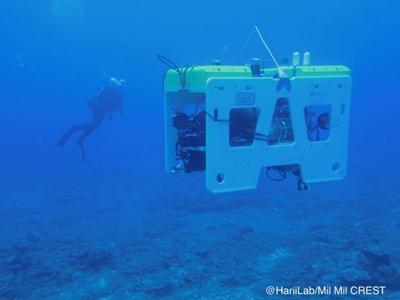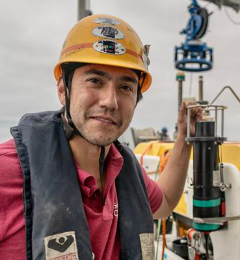Southampton and Tokyo collaboration in Marine Robotics and Coral Mapping

The diverse and abundant marine life that coral reefs support creates spectacular scenes that are enjoyed by hundreds of thousands of divers from all over the world. While to most, the word coral will conjure up images of people snorkeling in warm, clear blue waters, coral reefs are also known to exist more than a kilometre beneath the ocean’s surface, in complete darkness where the temperature of the water is just few degrees above freezing. The role that healthy coral plays in supporting marine life, not only in the shallows of the tropics but also in the deep-ocean, is seen as one of the key essential variables for scientists to form a better understanding of the marine ecosystem.
The UK and Japan are world leaders in marine robotics, with considerable investments by their respective governments in underwater technology. In particular, the UK’s Natural Environment Research Council (NERC) has recently awarded a grant to scholars in the Southampton Marine and Maritime Institute (SMMI), University of Southampton, in order to investigate how marine robotic systems equipped with high-resolution 3D imaging sensors can be used to improve the way in which we study these unique environments. This Daiwa Anglo-Japanese Foundation Award has been awarded to Associate Professor Blair Thornton of SMMI in the University of Southampton, and Associate Professor Toshihiro Maki of the Institute of Industrial Science (IIS) at the University of Tokyo in order to allow marine robotics researchers in both the UK and Japan to coordinate their efforts in addressing the challenges faced when applying robotic systems to study these unique underwater environments. This will allow researchers in the UK to participate in a collaborative survey expedition off Sesoko Island in Okinawa.
The autonomous underwater vehicle (AUV) TUNA-SAND 2 developed by the IIS and pictured above, will be used to assist scientists at the Harii Laboratory of the University of the Ryukyus to visually map the distribution of live coral. The international expedition will also welcome experts from the University of Sydney’s Australian Centre for Field Robotics (ACFR) who will share their expertise. Coordinated international efforts like these that are enabled by schemes such as the Daiwa Foundation are expected to pave the way for sustainable, international collaborations that will drive progress towards establishing global standards to inform responsible stewardship of our oceans.
Related Staff Member
Links to external websites
The University cannot accept responsibility for external websites.
